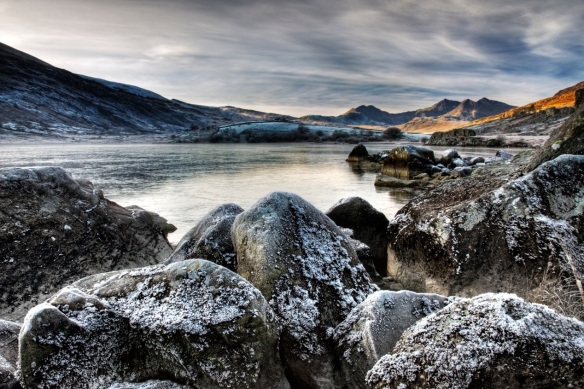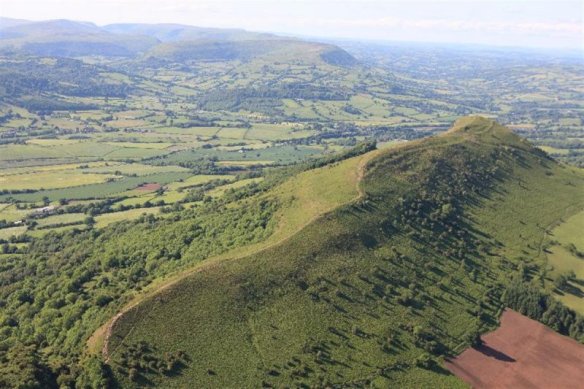Throughout the collections of ‘Field Work’ (Seamus Heaney) and ‘Skirrid Hill’ (Owen Sheers), each poet explores many memories of people. The encounters are all significant to the poets in different ways now that they have looked back on them. They have learned a lesson from each of the people in their poems that they carry in their memories and have grown from.
‘On Going’ is Sheers’ final memory of his deceased grandmother. Throughout, his diction creates the image of a breakable, old woman. The use of words such as ‘fragile’ and, ironically, ‘child’ presents the idea that she is helpless and innocent from what it is that is killing her be it age or a disease. The oxymoron ‘ancient child’ further emphasises this idea and enhances Sheers’ depiction of the fragile woman. However, Sheers also presents her in the first stanza as being a strong woman still in mindset when he reveals that she is ‘disconnected’ from the machines that wait beside her, ready to prolong her death. Most people in his grandmother’s position would use the machine but she becomes the machine as she is the only thing keeping her going.
The strength of the elderly is also looked at in Heaney’s poem ‘A Drink of Water’ – a poem in which Heaney describes a ‘bat’-like woman who is clearly ageing as is the place around her. The pump is personified throughout and becomes the elderly woman who will presumably have spent every day of her life using it. They have the same ‘whooping cough’ and the simile of her voice being like the creaking sound of the ‘pump’s handle’ also emphasises the similarities between the woman and the pump now that they are old and decrepit. Eventually, she becomes the water pump – the thing that keeps the people around alive just as Sheers’ grandmother becomes the life support machines. Both of the women seem to have the same sort of spirit towards their lives, hanging on and doing things for themselves. In ‘A Drink of Water’, the woman gets her own water (symbolic of life) and in ‘On Going’, the grandmother is simply trying to live by breathing on her own. Each poet explores two different lives that have ended up in similar ways where they are barely able to do the two simple tasks required to live.
As in ‘On Going’ and ‘A Drink of Water’, the poem ‘Casualty’ by Heaney presents the idea that death is inevitable. However, ‘Casualty’ presents the death of Louis O’Neill as a tragic one as it is not of old age but the result Louis O’Neill doing the same thing he did every day of his life – going for a drink. There is a difference between the life of Louis O’Neill and the old woman in ‘A Drink of Water’ in that her water is a life-preserver and his is essentially a life-destroyer’ in that it is what lead to his death. The metaphor of O’Neill being a fish that ‘naturally’ swam towards the ‘lure’ of pubs creates somewhat of an inevitability for the man’s death as it is a natural and seemingly unstoppable thing to stop the fish from seeking the reward it will get for being sucked in by the ‘lure’ going to the pub. In ‘Casualty’, Heaney makes it clear that O’Neill had a limited number of passions in his life, fishing being among them. It is fitting, then, that rather than going to his funeral, Heaney remembers back to when he went out of a boat with his hand, which allowed him to be more spiritually connected with his friend more than a funeral would have. This suggests an importance to Heaney towards the relationship between a person and their passions as is also suggested by Sheers in ‘The Farrier’ and ‘The Equation’ where a deep connection between man and nature is described.
‘The Farrier’ depicts a relationship that is much more connected than that of Louis O’Neill and fish (perhaps it is as connected as O’Neill and his drink are). Whereas Sheers suggests that the farrier’s life is being his job, O’Neill has no job and seems to live in a state of poverty. There is a suggestion of suffering on Heaney’s part as he remembers how O’Neill’s life was. He was a man born to work (as the farrier was) and he was a man fully skilled to working, but because of the political state of the country he live in, he wasn’t able to. He is a man with few passions – only fish, the land that he lived in (‘horses and cart’) and the ‘Provisionals’. Heaney suggests that he was ready to die for the IRA – for the land he was passionate about – and yet he died for his other passion.
Finally, in both ‘Casualty’ and Sheers’ ‘Mametz Wood’, there are ideas of conflict and suffering. Heaney presents the deaths very factually but the use of shorter lines creates a sadness for the losses of the men and by leaving the first section with this information and the people shocked and grieving as they ‘held [their] breath and trembled’, we are given a pause to reflect and digest the sadness of their deaths. Sheers is looking back at an event that happened much before his time and so the memory of the soldiers is not as much of a personal one for him as Heaney’s would have been, growing up around it. However, Sheers also manages to present the sadness that is to be felt and the question of “was there any point – is it all really worth the death of men?” that Heaney seems to suggest from the shock. The shock of the Irish will have been a reality check – the truth that only comes after realising that war means death.


